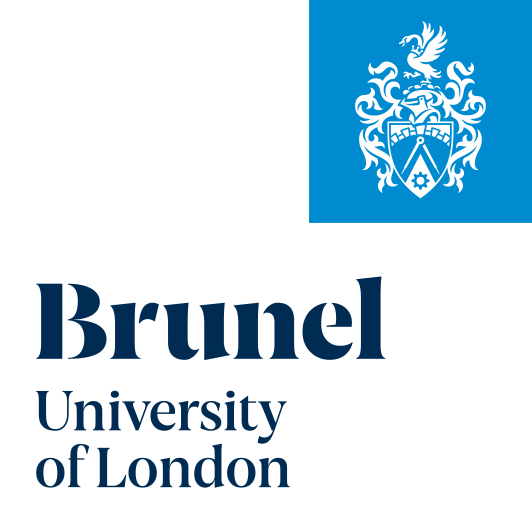
Dr Eujin Pei
Associate Dean (Quality Assurance) / Reader
Michael Sterling 156
- Email: eujin.pei@brunel.ac.uk
- Tel: +44 (0)1895 268055
Media interests
External Impact and Outreach
Eujin continues to be active in the design field. He has exhibited at an international level, including the MagicChef concept at the Panasonic Centre in Tokyo, Japan (2003); and the Clamplight at the NEC Lighting Show in Birmingham, UK (2007). In 2018, The Soundsphere Project was exhibited at the Cooper Hewitt, Smithsonian Design Museum. The Soundsphere is a physical representation of recorded sound. The surface is covered in ridges, which run around it laterally. Each of these ridges represent a set of frequencies within the sound, with low frequency at the bottom of the sphere (the bass); and high frequency at the top (the treble). The closer a ridge is to the top, the higher a band of frequencies it represents. Following these ridges laterally around the sphere is equal to observing the signal change over time (a measure of time). The extent to which the ridge protrudes from the sphere represents the sound intensity at any given moment (the volume) - the more the ridge protrudes, the louder the sound is in that frequency at that given time. The Soundsphere was exhibited in 2018 at the Cooper Hewitt, Smithsonian Design Museum as the only museum in the USA devoted exclusively to historic and contemporary product design.
Book Publications - Edited Books and Contributions to Book Chapters (2023)
Springer Handbook of Additive Manufacturing (2024): This Handbook is the ultimate definitive guide that covers key fundamentals and advanced applications for Additive Manufacturing. The Handbook has been structured into seven sections, comprising an Introduction to Additive Manufacturing; Design and Data; Processes; Materials; Post-processing, Testing and Inspection; Education and Training; and Applications and Case Study Examples. The general principles and functional relationships are described in each chapter and supplemented with industry use cases. The aim of this book is to help designers, engineers and manufacturers understand the state-of-the-art developments in the field of Additive Manufacturing. Although this book is primarily aimed at students and educators, it will appeal to researchers and industrial professionals working with technology users, machine or component manufacturers to help them make better decisions in the implementation of Additive Manufacturing and its applications. // Book Title: Springer Handbook of Additive Manufacturing // Editor-in-Chief: Eujin Pei; Editors: Alain Bernard, Dongdong Gu, Christoph Klahn, Mario Monzón, Maren Petersen, Tao Sun // Year of Publication: 2024 // Publisher: Springer Verlag AG // ISBN: 978-3-031-20751-8 // Number of Pages: 981 // Link: Springer Handbook of Additive Manufacturing
Handbook of Post-Processing in Additive Manufacturing (2023): This handbook presents experimental breakthroughs of novel methodologies that treat additively manufactured parts, which are suitable for demanding engineering applications. The handbook emphasizes the various types of post-processing technologies that can effectively eliminate the inferiorities of the additively manufactured components. It also provides a collection of key principles, literature, methodologies, experimental results, case studies, and the theoretical aspects of the different types of postprocessing techniques along with different classes of materials and end applications. // Book Title: Handbook of Post-Processing in Additive Manufacturing // Editors: Gurminder Singh, Ranvijay Kumar, Kamalpreet Sandhu, Eujin Pei, Sunpreet Singh // Year of Publication: 2023 // Publisher: CRC Press, Taylor and Francis // ISBN: 978-1-032-23172-3 // Number of Pages: 232 // Link: Handbook of Post-Processing in Additive Manufacturing: Requirements

A Guide to Additive Manufacturing (2022): This open access book gives both a theoretical and practical overview of several important aspects of additive manufacturing (AM). It is written in an educative style to enable the reader to understand and apply the material. It begins with an introduction to AM technologies and the general workflow, as well as an overview of the current standards within AM. In the following chapter, a more in-depth description is given of design optimization and simulation for AM in polymers and metals, including practical guidelines for topology optimization and the use of lattice structures. Special attention is also given to the economics of AM and when the technology offers a benefit compared to conventional manufacturing processes. This is followed by a chapter with practical insights into how AM materials and processing parameters are developed for both material extrusion and powder bed fusion. The final chapter describes functionally graded AM in various materials and technologies. Throughout the book, a large number of industrial applications are described to exemplify the benefits of AM. // Book Title: A Guide to Additive Manufacturing // Editors: Damir Godec, Joamin Gonzalez-Gutierrez, Axel Nordin, Eujin Pei, Julia Ureña Alcázar // Year of Publication: 2022 // Publisher: Springer Verlag AG // ISBN: 978-3-031-05862-2 // Number of Pages: 324 // Link: A Guide to Additive Manufacturing

Innovation in Construction (2022): This book tackles the complex topic of implementing innovation and the successful application of advanced technology in the construction industry. It provides a practical guide for the transformation of the industry by detailing appropriate and effective implementation methods, required skill sets and structural changes necessary to facilitate the practical and innovative application of technology. // Book Title: Innovation in Construction // Editors: Seyed Hamidreza Ghaffar, Paul Mullett, Eujin Pei and John Roberts // Chapter Contribution: Chapter 1: What is Industry 4.0 // Year of Publication: 2022 // Publisher: Springer AG // ISBN: 978-3030957971 // Number of Pages: 477 // Link: Innovation in Construction

Innovative Processes and Materials and Additive Manufacturing (2022): Innovative Processes and Materials in Additive Manufacturing explains game-changing interdisciplinary applications of recent research breakthroughs in additive manufacturing technology. This book acts as a bridge between this high-level research and the large number of academics and practitioners looking to additive manufacturing for innovative solutions, providing them with practical and approachable information. Applications in aerospace, automotive, medical, construction, and food industries are addressed, featuring technical details that will help successful implementation. This unique book also provides broad coverage of the theory behind this emerging technology, including material development, as well as the technical details required for readers to investigate the novel applications of the involved methods for themselves. Chapter Contribution: Chapter 8: Improving the communication of 4D printing between engineers and designers // Year of Publication: 2022 // Publisher: Elsevier // ISBN: 978-0323860116 // Number of Pages: 550 // Link: Innovative Processes and Materials in Additive Manufacturing

Sustainability for 3D Printing (2021): This book is part of the Springer Tracts in Additive Manufacturing, providing readers with a broad overview about sustainability and the environmental impact towards use of Additive Manufacturing. Aspects of recycling, biomaterials, design approaches and supply chain management are also described in the various chapters. Chapter Contribution: Chapter 1: Sustainability for 3D Printing // Year of Publication: 2021 // Publisher: Springer AG // ISBN: 978-3030752347 // Number of Pages: 345 // Link: Sustainability for 3D Printing

Additive Manufacturing with Functionalized Nanomaterials (2021): This book summarizes recent progress of functionalized nanomaterials-based additive manufacturing on both an experimental and a theoretical model level. Though nanomaterials can be fabricated by bottom-up and top-down approaches (techniques include lithography, photolithography, and micro-machining), the applications of additive manufacturing processes are increasing at an exponential rate and therefore, the demand for high-performance materials has been greatly increasing. Recent applications covered in this book include biomedicine, aerospace, automobile, waste recycling, and energy storage devices. Environmental, regulatory and safety issues are also discussed. // Book Title: Additive Manufacturing with Functionalized Nanomaterials // Editors: Sunpreet Singh and Chaudhery Hussain // Chapter Contribution: Chapter 2: Functionally Graded Additive Manufacturing // Year of Publication: 2021 // Publisher: Elsevier // ISBN: 978-0128231524 // Number of Pages: 204 // Link: Additive Manufacturing with Functionalized Nanomaterials

Additive Manufacturing - Developments in Training and Education (2018): This book brings together the contributions of internationally leading experts to discuss aspects of new means of teaching, providing training programmes to gain alternative employment pathways, the need for certification by professional bodies and using community-oriented maker spaces to promote awareness of AM among the society. // Book Title: Additive Manufacturing – Developments in Training and Education // Editors: Eujin Pei, Mario Monzon and Alain Bernard // Year of Publication: 2018 // Publisher: Springer Verlag // DOI: 10.1007/978-3-319-76084-1 // ISBN: 978-3-319-76083-4 // Number of Pages: 229 // Link: https://www.springer.com/gp/book/9783319760834

Additive Manufacturing - Applications and Innovations (2018): This book presents a series of industrial case studies of commonly used Additive Manufacturing technologies. It also includes hybrid processes and 4D printing applications that are seldom offered in other AM books. In addition, every chapter contains sections that require readers to find answers to problems that will encourage a better understanding of the subject. This book has been written in a step-by-step format, showcasing the different commercial AM technologies for field application. // Book Title: Additive Manufacturing: Applications and Innovations // Editors: Rupinder Singh, J. Paulo Davim // Chapter Contribution: Chapter 7: A Novel Approach of using Ultrasound to Improve the Surface Quality of 3D Printed Parts // Year of Publication: 2018 // Publisher: CRC Press (Taylor and Francis) // ISBN: 9781138050600 // Number of Pages: 268 // Link: https://www.crcpress.com/Additive-Manufacturing-Applications-and-Innovations/Singh-Davim/p/book/9781138050600

Product Design and the Role of Representations (2022): This book extends understanding of the design process by exploring design representation types and examining them as theoretical constructs. It shows how fidelity and ambiguity inform the creative act of design, and considers design thinking through the lens of design representation. // Year of Publication: 2021 // Publisher: CRC Press (Taylor and Francis) // ISBN: 978-0367630010 // Number of Pages: 248 // Link: Product Design and the Role of Representation | Foundations for Design

The Senses: Design Beyond Vision (2018): The Senses accompanies the major exhibition at the Cooper-Hewitt Smithsonian Design Museum that explores how space, materials, sound, and light affect the mind and body. It features thematic essays on topics ranging from design for the table to tactile graphics, tactile sound, and visualizing the senses. This book compiles projects based on multisensory design practice and data visualization. // Book Title: The Senses: Design Beyond Vision // Editors: Andrea Lipps, Ellen Lupton // Chapter Contribution: Chapter 19: Visualizing Sound // Year of Publication: 2018 // Publisher: Princeton Architectural Press // ISBN: 1616897104 // Number of Pages: 224 // Link: https://www.cooperhewitt.org/publications/the-senses-design-beyond-vision

Design Pedagogy - Developments in Art and Design Education (2015): This book draws on recent work in the visual language of designing, the media of representation used, and the practical realities of tackling design questions. The book explores how design education is a passport to practice and showcases how some of the key developments in education use techniques related to collaboration, case studies and experience to motivate students, enable them to express their identity, reflect and learn. // Book Title: Design Pedagogy - Developments in Art and Design Education // Editor: Michael Tovey // Chapter Contribution: Chapter 9: Developing Tools to Support Collaboration and Understanding during Industrial Design Practice // Year of Publication: 2015 // Publisher: Routledge (Taylor and Francis) // ISBN: 9781317152262 // Number of Pages: 290 // Link: https://www.taylorfrancis.com/books/e/9781317152262


